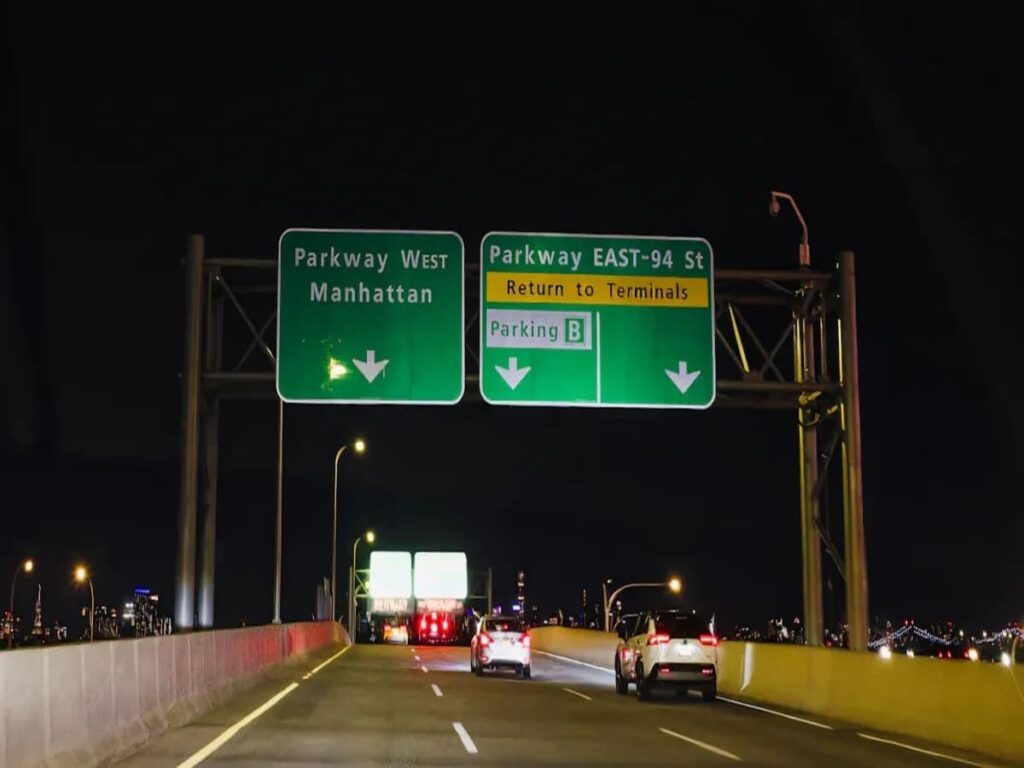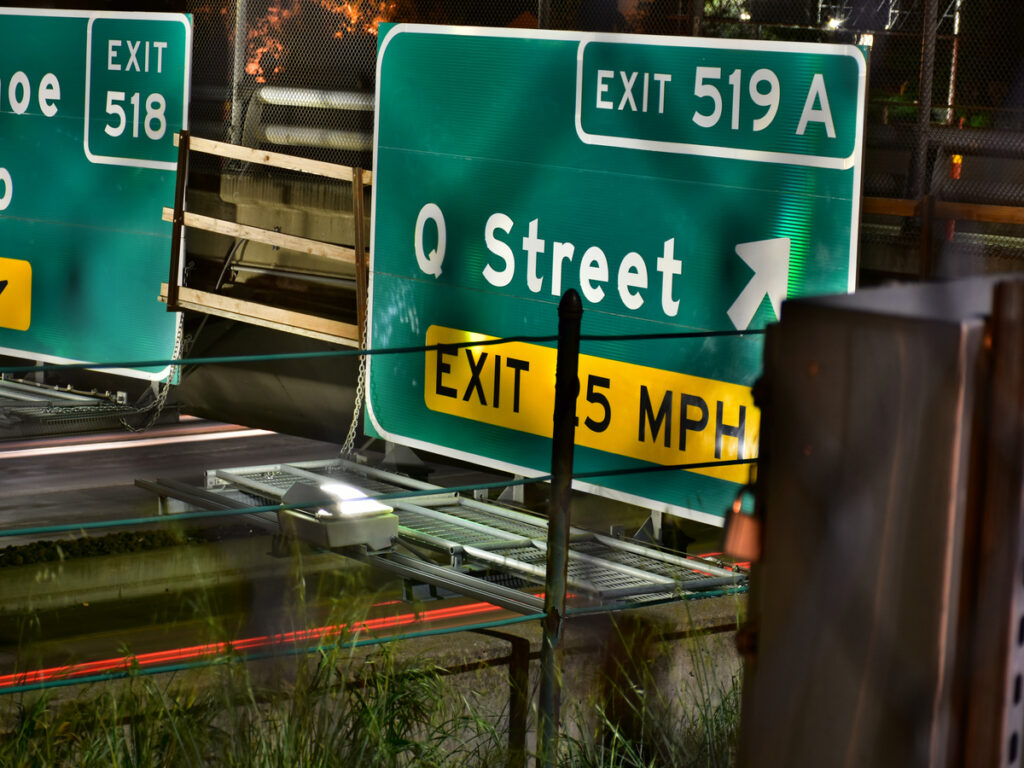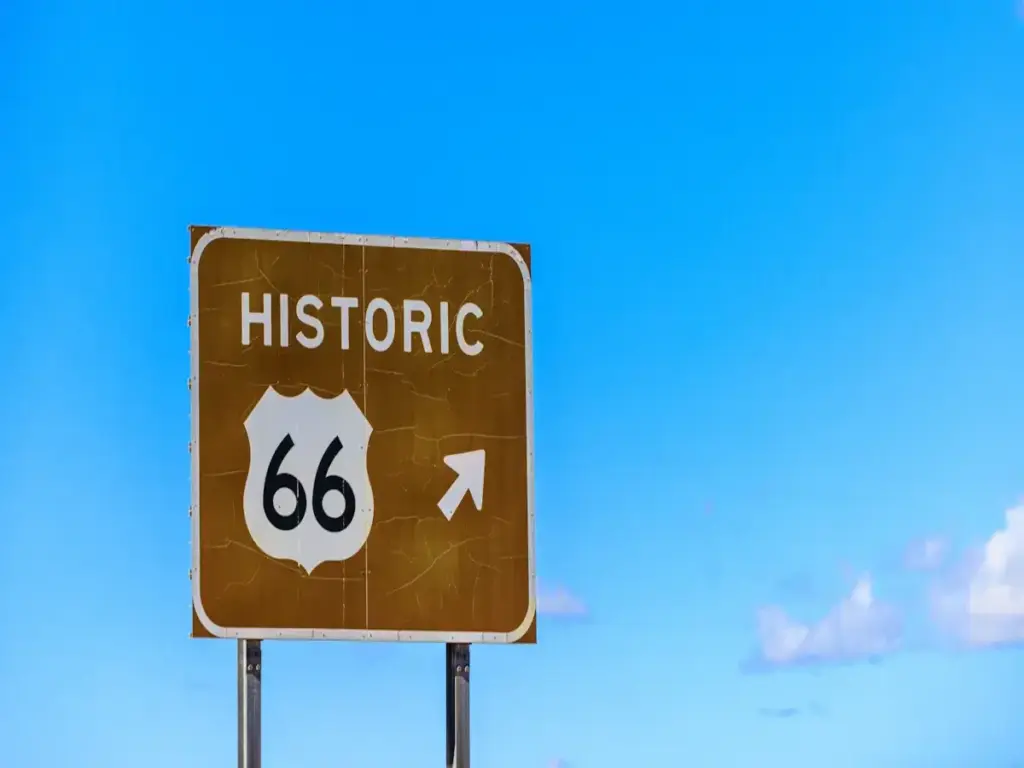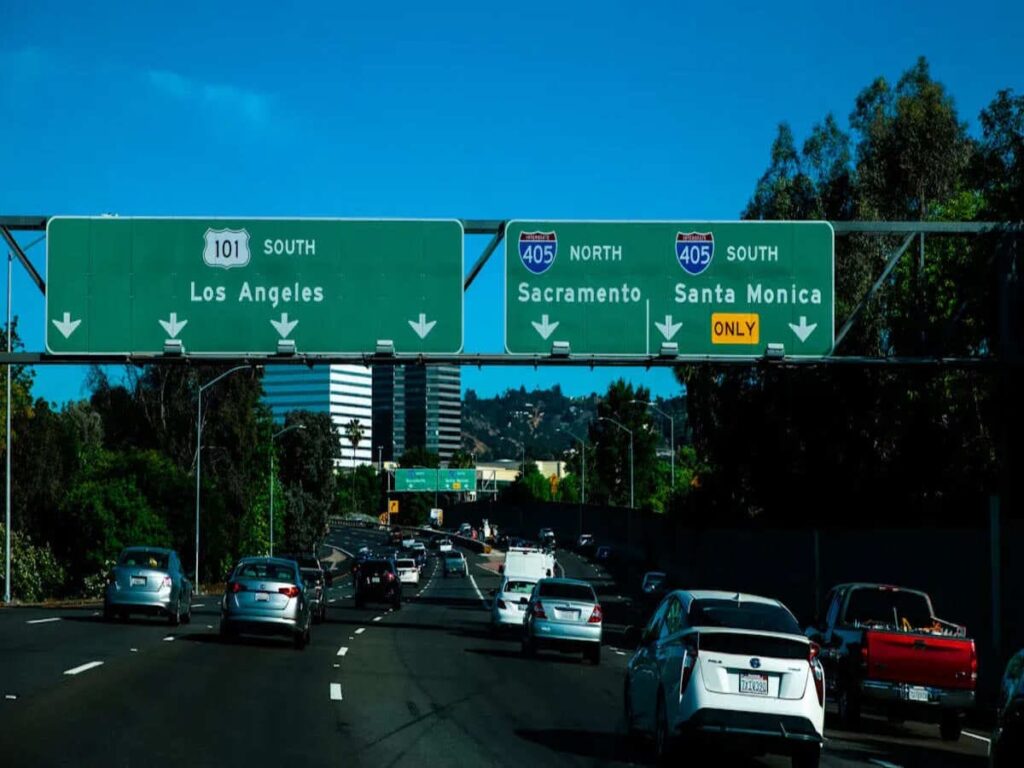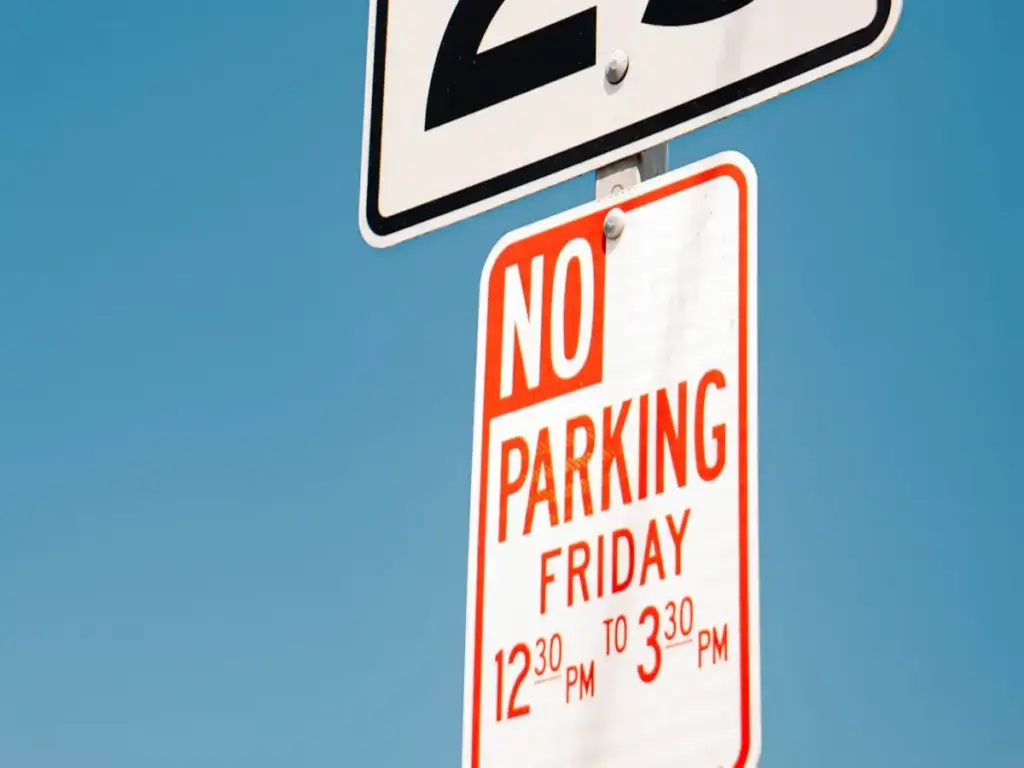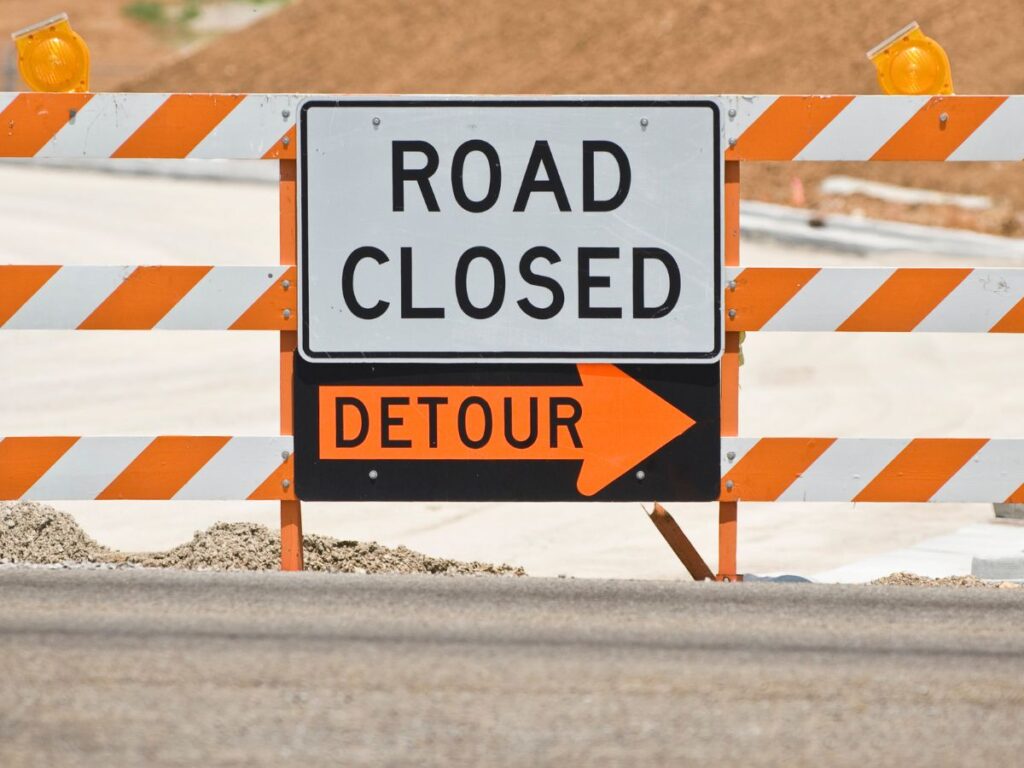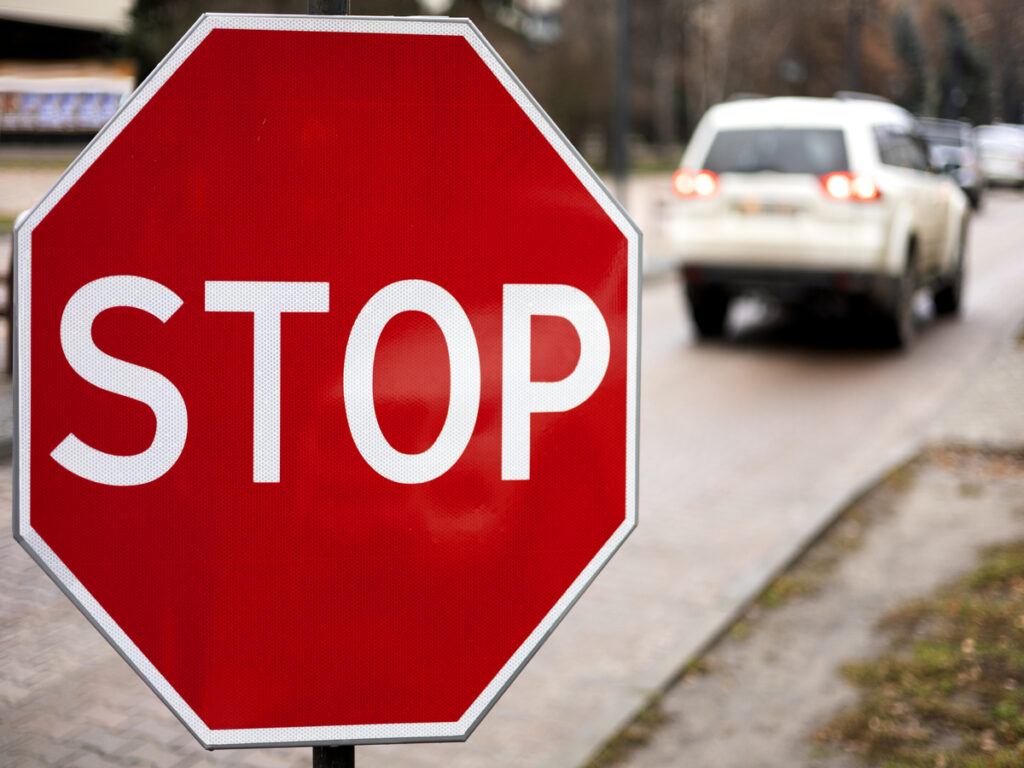
علامات التوقف عن حركة المرور وأخافير السرعة شائعة في الأحياء. تهتم هذه الأماكن كثيرًا بتهدئة حركة المرور. تساعد كل أداة الأشخاص في الحفاظ على سلامة الطرق. الحدبات السريعة تجعل السيارات تسير بشكل أبطأ لمسافة طويلة. تظهر الدراسات أنها تقلل السرعة ومخاطر الإصابة للأطفال. يحدث هذا في الأماكن التي تستخدم فيها مطبات السرعة. تساعد إشارات التوقف المرورية في التحكم في مفترق الطرق. كما أنها تساعد في الحفاظ على سلامة الأشخاص أثناء المشي. تتحسن السلامة عند استخدام الأداة المناسبة. يعتمد أفضل إجراء مهدئ على ما يحتاجه الحي.
يساعد استخدام المزيج الصحيح من أدوات تهدئة حركة المرور - مثل إشارات المرور ومطبات السرعة - في إنشاء شوارع أكثر أمانًا للجميع. في أوبترافيك, نحن نقدم علامات المرور للبيع و حدبات السرعة للبيع التي تلبي المعايير الأسترالية, توفير دائم, حلول عالية الوضوح مصممة خصيصًا لسلامة الأحياء.
نظرة عامة على تدابير تهدئة حركة المرور

ما هي علامات توقف حركة المرور?
من السهل على الناس اكتشاف إشارات التوقف المرورية. تخبر هذه العلامات السائقين متى يجب عليهم إيقاف سياراتهم. تضعهم المجالس حيث تتقاطع الطرق مع بعضها البعض. المهمة الرئيسية هي المساعدة في التحكم في حركة المرور وإيقاف الأعطال. يجب على السائقين التوقف بشكل كامل والبحث عن السيارات أو الأشخاص. لا يمكنهم الذهاب إلا عندما يكون الوضع آمنًا. تعمل هذه العلامات بشكل أفضل عند مفترق الطرق التي يصعب رؤيتها أو التي تعرضت لحوادث من قبل. تحتاج معظم الأماكن إلى إذن خاص لوضع هذه اللافتات. في المملكة المتحدة, ال قواعد TSRGD تستخدم. في أستراليا, تتوالى المجالس مثل 1742 المعايير. تساعد علامات التوقف المرورية في الحفاظ على سلامة الجميع من خلال جعل الأشخاص يتوقفون ويتحققون.
ما هي الحدبات السرعة?
مطبات السرعة هي مطبات مبنية على الطريق. أنها تجعل السيارات تبطئ عند القيادة فوقها. مطبات السرعة ليست مثل إشارات التوقف المرورية. لا يتعين على السائقين التوقف بشكل كامل. بدلاً من, يقودون ببطء فوق الحدبة. تستخدم المجالس ومديرو العقارات مطبات السرعة في المناطق المدرسية, مواقف السيارات, والشوارع التي يعيش فيها الناس. تساعد هذه المطبات على إيقاف الحوادث عن طريق جعل السيارات تسير بشكل أبطأ. يمكن صنع حدبات السرعة من الأسفلت, ممحاة, أو البلاستيك. إنهم يعملون بشكل أفضل على المدى الطويل, الطرق المستقيمة حيث قد تسير السيارات بسرعة كبيرة. في أماكن خاصة, لا تحتاج عادةً إلى إذن خاص, لكن العلامات تحذر السائقين. المطبات السريعة محبوبة لدى الكثيرين لأنها تساعد في الحفاظ على الطرق آمنة للجميع.
نصيحة: إن استخدام إشارات التوقف المرورية ومطبات السرعة معًا يمكن أن يجعل الطرق أكثر أمانًا لجميع الأشخاص.
| ميزة | علامات توقف حركة المرور | حدبات السرعة |
|---|---|---|
| الوظيفة الرئيسية | توقف تام عند نقطة ما | إبطاء المركبات |
| أفضل موقع | التقاطعات | منتصف الكتلة, طرق طويلة |
| الشرط القانوني | مطلوب عادة | في كثير من الأحيان لا تكون هناك حاجة بشكل خاص |
| سلوك السائق | توقف وانطلق | سلس, القيادة البطيئة |
مقارنة الفعالية
تقليل السرعة
يساعد تهدئة حركة المرور على التحكم في سرعة سير السيارات في الأحياء. تعتبر مطبات السرعة جيدة جدًا في إبطاء سرعة السائقين. يجب على السائقين السير بشكل أبطأ على مطبات السرعة وإلا قد تتضرر سياراتهم. يحدث هذا التباطؤ على طول الطريق بأكمله, ليس فقط في مكان واحد. تظهر الدراسات التي أجريت في الضواحي أن السرعة تقلل من سرعات السيارة كثيرًا. على سبيل المثال:
- وجدت دراسة تورونتو 26% عدد أقل من الحوادث بين الأشخاص الذين يسيرون والسيارات بعد وضع حدبات السرعة.
- ورأت نفس الدراسة 43% حوادث أقل مع الأطفال الذين تتراوح أعمارهم بين 0-15.
- إن المطبات السريعة تجعل السيارات تسير بشكل أبطأ دائمًا, لذلك هناك عدد أقل من الحوادث والإصابات.
تساعد إشارات التوقف المرورية أيضًا على إبطاء السيارات, ولكن فقط عند مفترق الطرق. يقوم العلماء بالتحقق قبل وبعد لمعرفة كيفية عمل علامات التوقف. دراسة واحدة في 31 تم العثور على علامات توقف عند مفترق الطرق مما أدى إلى انخفاض أدنى سرعة للسيارة 60%. أفسح المزيد من السائقين الطريق, الذهاب من 45.7% ل 76.7%. وجدت دراسة دنماركية أخرى وجود علامات توقف وأشياء مماثلة تجعل السيارات تسير 11 كم/ساعة أبطأ في المتوسط. أكثر من ثلاث سنوات, كان هناك 77 عدد أقل من الحوادث و 88 عدد أقل من الناس يصب بأذى.
الحدبات السريعة تجعل السيارات تسير ببطء على طول الطريق. علامات التوقف تجعل السيارات تتوقف وتنطلق, لذلك قد تتسارع السيارات بين مفترقات الطرق. كلتا الطريقتين يمكن أن تقلل من أرقام الأعطال, لكن مطبات السرعة عادةً ما تجعل السيارات بطيئة في معظم الأوقات.
ملحوظة: تعمل الحدبات السريعة بشكل أفضل على المدى الطويل, الطرق المستقيمة التي يمكن أن يسرع فيها السائقون. تعمل علامات التوقف بشكل أفضل عند مفترق الطرق أو الأماكن التي يصعب رؤيتها.
تحسين السلامة لجميع المستخدمين
السلامة هي السبب الرئيسي لتهدئة حركة المرور. تساعد حدبات السرعة وعلامات التوقف في الحفاظ على سلامة الأشخاص, لكنهم يفعلون ذلك بطرق مختلفة.
تعمل مطبات السرعة على جعل الطرق أكثر أمانًا من خلال إجبار السيارات على التباطؤ. عندما تسير السيارات أبطأ, لدى السائقين المزيد من الوقت لرؤية المخاطر, مثل شخص يعبر الطريق أو راكب دراجة. أظهرت دراسات من جنوب أفريقيا وغانا أن المطبات السريعة تقلل الإصابات بين السيارات والأشخاص 23%. حوادث خطيرة تنخفض أيضا, ويموت المزيد من الناس حيث لا توجد أدوات تهدئة. في بعض البلدات, تكون حوادث الاصطدام المميتة مع الأشخاص الذين يسيرون أقل بثلاث مرات عند استخدام حدبات السرعة.
| نوع التدخل | موقع | النتيجة الكمية | أهمية إحصائية / يقيس |
|---|---|---|---|
| مطبات السرعة ومطبات السرعة الممتدة | جنوب أفريقيا | 23% إصابات أقل بين السيارات والناس; انخفض معدل التصادم الخطير من 1.41 ل 0.96 و 2.35 ل 1.40 لكل كيلومتر | P = 0.007 و ص < 0.001 |
| مطبات السرعة ومطبات السرعة الممتدة | غانا | يكون خطر الوفاة بالنسبة للأشخاص الذين يمشون أعلى عندما لا توجد أدوات مهدئة (أو = 1.78) | تم تعديله حسب الجنس, عمر, الوقت من اليوم |
| تدابير تهدئة حركة المرور (السنامات السرعة) | مدن مختلفة | الحوادث المميتة مع الأشخاص الذين يسيرون أقل بثلاث مرات | – |
| تأثير تخفيض السرعة | نيودلهي | 1% أبطأ متوسط السرعة يعني 7% عدد أقل من الوفيات للأشخاص الذين يمشون | – |
علامات التوقف أيضًا تجعل الطرق أكثر أمانًا, خاصة عند مفترق الطرق حيث تلتقي السيارات والأشخاص. عندما يجب على السائقين التوقف, هناك حوادث أقل وهي أكثر أمانًا للأشخاص الذين يمشون وركوب الدراجات. وجدت دراسات دنماركية أن علامات التوقف وغيرها من أدوات التهدئة تقلل من خطر التعرض للأذى 72% عن كل كيلومتر تقطعه وتقطع به إصابات خطيرة 78%. وهذا يوضح أن حدبات السرعة وعلامات التوقف يمكن أن تقلل من حوادث الاصطدام وتحافظ على سلامة الجميع.
وجدت دراسة جديدة في مونتريال أن أدوات التهدئة مثل مطبات السرعة وملحقات الرصيف تسببت في حدوث حوادث مميتة أو سيئة عند مفترق الطرق تنخفض كثيرًا. انخفض عدد الحوادث الخطيرة إلى حوالي 31% مما كان عليه من قبل. وهذا يثبت أن الطرق الهادئة تجعلها أكثر أمانًا.
أصبح الأشخاص الذين يمشون ويركبون الدراجات أكثر أمانًا باستخدام هذه الأدوات. السيارات الأبطأ تعني معابر أكثر أمانًا وإصابات أقل. السائقون يفوزون أيضًا, نظرًا لوجود عدد أقل من الأعطال وتكلفة أقل. تساعد مطبات السرعة وإشارات التوقف على جعل الطرق أكثر أمانًا للجميع.
نصيحة: إن استخدام مطبات السرعة وإشارات التوقف معًا يمكن أن يوفر المزيد من الأمان, خاصة بالقرب من المدارس أو المعابر المزدحمة.
سلوك السائق والامتثال
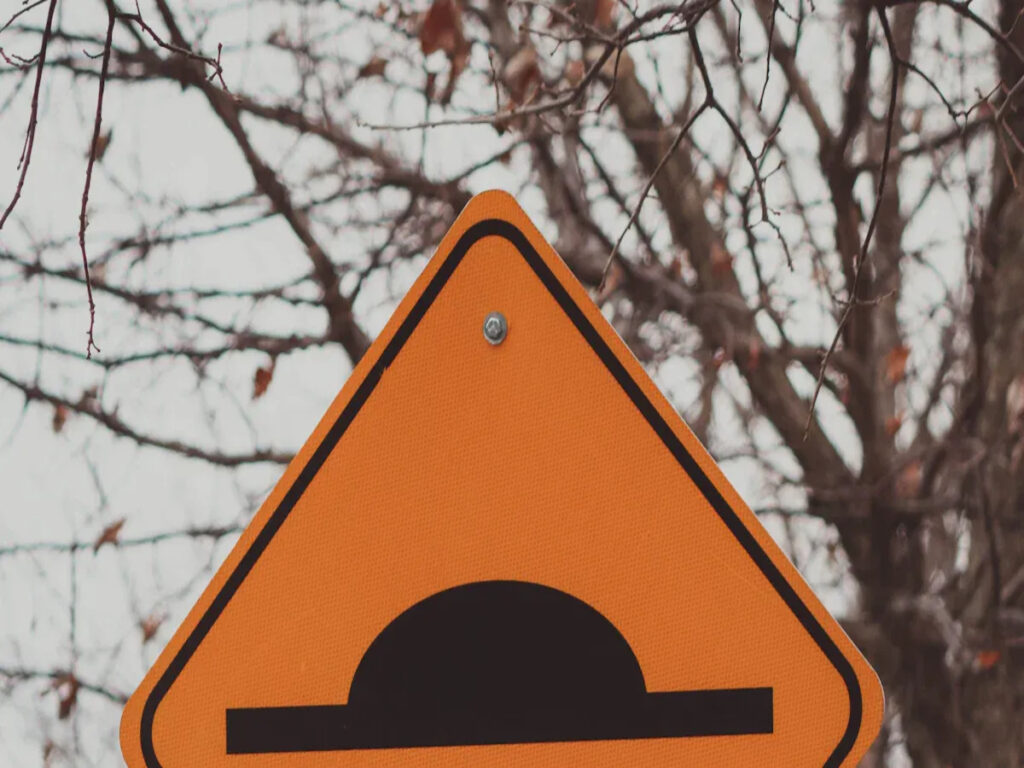
الاستجابة لإشارات التوقف المرورية
غالبًا ما يتفاعل السائقون بشكل مختلف مع إشارات التوقف المرورية بناءً على عدة عوامل. يلاحظ العديد من سائقي السيارات العلامة ويستعدون للتوقف, ولكن لا يتبع الجميع القواعد في كل مرة. يبطئ بعض السائقين سرعتهم ولكنهم لا يتوقفون تمامًا. قد يتجاهل الآخرون الإشارة إذا كانوا يعتقدون أن الطريق خالٍ. هذا السلوك يمكن أن يعرض المشاة وراكبي الدراجات للخطر, خاصة في التقاطعات المزدحمة.
لقد درس الباحثون كيف يتصرف السائقون عند إشارات التوقف. لقد وجدوا عدة أنماط:
- يولي السائقون اهتمامًا أكبر لإشارات التوقف عندما يكون من السهل رؤية اللافتة.
- سوء الأحوال الجوية أو الإضاءة المنخفضة يمكن أن تجعل السائقين يفوتون الإشارة.
- في بعض الأحيان، يتخطّى السائقون الذين يعرفون المنطقة التوقف إذا كانوا يعتقدون أنها آمنة.
- يمكن أن تساعد العلامات الإضافية أو علامات الطريق في تذكير السائقين بالتوقف.
تعمل علامات التوقف المرورية بشكل أفضل عندما يحترم السائقون القواعد. الامتثال الجيد يحسن السلامة للجميع. يشعر المشاة بأمان أكبر عند عبور الطريق عندما تتوقف السيارات. يستفيد راكبو الدراجات أيضًا لأنهم يستطيعون العبور بمخاطر أقل. لكن, الإفراط في استخدام إشارات التوقف يمكن أن يؤدي إلى تجاهل السائقين لها, مما يقلل من تأثيرها على تهدئة حركة المرور.
الاستجابة لمطبات السرعة
تغير حدبات السرعة طريقة قيادة سائقي السيارات على طول الطريق بأكمله, ليس فقط عند نقطة واحدة. عندما يرى السائقون حدود السرعة أمامهم, إنهم يبطئون لتجنب الانزعاج أو الضرر الذي يلحق بمركباتهم. ويساعد هذا الانخفاض المطرد في السرعة في الحفاظ على هدوء حركة المرور وتحسين السلامة لجميع مستخدمي الطريق.
تشجع مطبات السرعة السائقين على الحفاظ على سرعة أقل بين الحدبات. وهذا يساعد على حماية المشاة الذين قد يعبرون أي مكان على طول الشارع. يشعر راكبو الدراجات أيضًا بالأمان لأن السيارات تتحرك بشكل أبطأ ويمكن التنبؤ به. في المناطق التي بها مطبات كثيرة للسرعة, يتعلم سائقو السيارات توقع حركة مرور أبطأ وتعديل عادات القيادة الخاصة بهم.
على عكس علامات التوقف, لا تعتمد مطبات السرعة على قيام السائقين باختيار التوقف. الشكل المادي للطريق يفرض تغييرا في السلوك. وهذا يجعل من المطبات السريعة وسيلة موثوقة لإبطاء حركة المرور وتحسين السلامة للجميع.
ملحوظة: غالبًا ما تعمل مطبات السرعة بشكل جيد في المناطق السكنية, المناطق المدرسية, ومواقف السيارات حيث ثابتة, هناك حاجة إلى حركة مرور بطيئة من أجل سلامة المشاة وراكبي الدراجات.
اعتبارات عملية
التثبيت والصيانة
إن استخدام أدوات التهدئة المرورية يحتاج إلى تخطيط جيد. تنظر المجالس والمديرون إلى التكاليف قبل أن يختاروا ذلك. الحدبات السريعة لا تكلف الكثير وهي سهلة التركيب. يختار العديد من الأشخاص وسائد السرعة المطاطية التي يمكن تحريكها. هذه جيدة للاستخدام على المدى القصير أو لمعرفة ما إذا كانت تعمل بشكل جيد. تحتاج إشارات التوقف إلى أعمال بناء أقل ولكن يجب وضعها في المكان المناسب وتحتاج إلى موافقة قانونية.
يوضح الجدول أدناه تكلفة استخدام أدوات مختلفة لتهدئة حركة المرور:
| قياس تهدئة حركة المرور | نطاق تكلفة التثبيت النموذجي (دولار أمريكي) | ملاحظات حول الاعتبارات العملية |
|---|---|---|
| سنام السرعة | $1,000 – $8,000 | تكلفة منخفضة; قياس الانحراف العمودي المشترك |
| وسادة السرعة | $2,500 – $6,000 (أسفلت), $3,000 – $4,000 (ممحاة) | وسائد مطاطية قابلة للإزالة, جيد للاستخدام المؤقت |
| جدول السرعة | $2,500 – $8,000 | يحتاج إلى مواد أكثر من مطبات السرعة |
| غالط | $8,000 – $25,000 | تكلفة متوسطة; يؤثر التصميم والصرف على السعر |
| دائرة المرور | $10,000 – $25,000 | تكلفة متوسطة; يعتمد على الحجم والمناظر الطبيعية |
| الدوار الصغير | $15,000 – $60,000 | تكلفة متوسطة إلى عالية, يختلف حسب المقياس |
| الدوار | $150,000 – $2,000,000 | تكلفة عالية; مشروع البنية التحتية الكبيرة |
غالبًا ما يكون تهدئة حركة المرور يستحق الأموال التي يتم إنفاقها. تقول الدراسات أن كل جنيه يتم إنفاقه يمكن أن يعيد ما يصل إلى سبعة عشر جنيهًا. يحدث هذا بسبب وجود عدد أقل من الأعطال, المنازل تستحق أكثر, والناس أكثر صحة.
الضوضاء والبيئة
يمكن أن تحدث مطبات السرعة ضجيجًا أكبر عندما تمر السيارات فوقها. ويكون هذا أسوأ إذا لم يبطئ السائقون سرعتهم بدرجة كافية. يسمع بعض الأشخاص المزيد من أصوات المحرك والفرامل بالقرب من الحدبات. يمكن أن تُحدث علامات التوقف أيضًا ضجيجًا بسبب توقف السيارات وبدء تشغيلها, ولكن هذا فقط عند مفترق الطرق.
التصميم الجيد يمكن أن يساعد في تقليل الضوضاء. تساعد وسائد السرعة المطاطية والعلامات الواضحة على إبقاء الأمور أكثر هدوءًا. يمكن للأشجار والمساحات الخضراء القريبة من أدوات التهدئة أن تمتص الصوت وتجعل المنطقة أجمل.
نصيحة: يمكن للمجالس تجربة أدوات التهدئة المؤقتة أولاً. وهذا يساعدهم على التحقق من الضوضاء قبل إجراء التغييرات التي تدوم طويلاً.
وصول الطوارئ
يجب أن تمر مركبات الطوارئ بسرعة وأمان. يمكن أن تؤدي المطبات السريعة إلى إبطاء سيارات الإطفاء أو سيارات الإسعاف. تتيح وسائد السرعة للمركبات الأكبر حجمًا المرور بتأخير أقل. علامات التوقف لا تعيق مركبات الطوارئ ولكنها قد تجعلها تتوقف لفترة قصيرة.
يتحدث المخططون إلى خدمات الطوارئ لاختيار أفضل الأدوات. يمكن أن تساعد الحدبات القابلة للإزالة أو السفلية في الحفاظ على أمان الطرق والسماح للمساعدة بالمرور. يضمن التخطيط الجيد أن أدوات التهدئة لا تمنع المساعدة من الوصول إلى الأشخاص الذين يحتاجون إليها.
متى تستخدم كل
أفضل السيناريوهات لإشارات التوقف المرورية
علامات التوقف المرورية هي الأفضل عند مفترق الطرق حيث السيارات, الدراجات, ويجتمع الناس. تختار المجالس إشارات التوقف للأماكن ذات الإطلالات السيئة أو العديد من الحوادث. هذه العلامات تجعل السائقين يتوقفون ويبحثون عن الآخرين. وهذا يساعد على إبقاء الجميع في المنطقة أكثر أمانًا. في المدن ذات حركة المرور المنخفضة, إن استخدام إشارات التوقف بدلاً من إشارات المرور يمكن أن يقلل من حوادث المرور بحوالي 25%. وهذا يجعل علامات التوقف خيارًا جيدًا للأحياء المزدحمة التي تريد عددًا أقل من الحوادث.
يجب أن توافق المجالس على مكان وضع علامات التوقف. تعد علامات التوقف مفيدة للطرق التي يجب على السائقين فيها إفساح المجال, مثل المدارس القريبة أو المعابر. كما أنها تساعد في الأماكن التي يلعب فيها الأطفال أو يسير فيها الأشخاص إلى المتاجر. علامات التوقف ليست جيدة لفترة طويلة, الطرق المستقيمة أو في منتصف الكتل. وقد يتجاهلها السائقون إذا لم تكن هناك حاجة إليها. للحصول على أفضل السلامة, استخدم علامات التوقف حيث ستساعدك أكثر.
نصيحة: ضع علامات التوقف عند مفترق الطرق ذات المناظر السيئة أو في الأماكن التي يعبرها عدد كبير من الأشخاص. وهذا يحافظ على سلامة الناس ويساعد المجتمع.
أفضل السيناريوهات لمطبات السرعة
تعمل حدبات السرعة بشكل جيد على المدى الطويل, الطرق المستقيمة حيث قد تسير السيارات بسرعة كبيرة. تعمل هذه المطبات على إبطاء حركة السيارات على مدى فترة طويلة, ليس فقط في مكان واحد. الحدبات السريعة جيدة في الأحياء, مواقف السيارات, والأماكن التي يسير فيها الناس. كما أنهم يساعدون بالقرب من المدارس التي يعبر فيها الأطفال كثيرًا. تشير الدراسات إلى أن المطبات السريعة يمكن أن تجعل السيارات تصل إلى أعلى 24% أبطأ على الطرق الكبيرة و 18% أبطأ على الطرق الصغيرة. السيارات تبطئ حوالي 30 متر قبل الحدبة وتسريع مرة أخرى 30 مترا بعد. وهذا يجعلها أكثر أمانًا للأشخاص الذين يعبرون الحدود.
تعد المطبات السريعة هي الأفضل للطرق ذات حركة المرور الثابتة والتي لا تحتوي على العديد من الشاحنات الكبيرة. قد لا تتباطأ الحافلات والشاحنات كثيرًا بسبب حجمها. إن وضع حدبات السرعة بالقرب من المعابر يجعل الأمر أكثر أمانًا للأشخاص الذين يقومون بالمشي وركوب الدراجات. غالبًا ما تختار الأحياء التي تريد شوارع أكثر أمانًا المطبات السريعة. يجب على المخططين التفكير في الضوضاء والأبخرة, خاصة في المناطق الهادئة. يمكن أن تساعد الحدبات المطاطية أو المعيارية في تقليل الضوضاء.
ملحوظة: تعد مطبات السرعة هي الأفضل عندما تكون هناك حاجة إلى القيادة البطيئة, مثل المدارس القريبة, الحدائق, والمعابر المزدحمة.
الجمع بين تدابير تهدئة حركة المرور
تستخدم بعض الأماكن علامات التوقف ومطبات السرعة لتحقيق أفضل مستوى من الأمان. علامة التوقف عند مفترق طرق مزدحم تتحكم في من يذهب أولاً. الحدبات السرعة قبل وبعد إبقاء السيارات بطيئة على طول الطريق. هذا يساعد الجميع, وخاصة الأطفال وكبار السن.
ويوضح الجدول متى يتم استخدام كل أداة:
| سيناريو | توقف العلامات | حدبات السرعة | كلا مجتمعة |
|---|---|---|---|
| تقاطعات ذات رؤية ضعيفة | ✅ | ❌ | ✅ |
| طويل, طرق سكنية مستقيمة | ❌ | ✅ | ✅ |
| بالقرب من المدارس والملاعب | ✅ | ✅ | ✅ |
| مناطق ومعابر المشاة | ✅ | ✅ | ✅ |
| مواقف السيارات والعقارات الخاصة | ❌ | ✅ | ✅ |
يجب على المجتمعات اختيار الأداة المناسبة لاحتياجات الطريق والسلامة. إن استخدام كليهما يمكن أن يجعل الشوارع أكثر أمانًا وأفضل للأشخاص الذين يمشون.
يجب على المخططين التحقق من القواعد المحلية قبل استخدام أدوات التهدئة. تتيح الحدبات أو العلامات المؤقتة للأشخاص اختبار ما هو الأفضل. إن المزيج الصحيح من علامات التوقف ومطبات السرعة يمكن أن يجعل الحي أكثر أمانًا وأكثر ودية للجميع.
تساعد أدوات تهدئة حركة المرور مثل مطبات السرعة وعلامات التوقف في جعل الطرق أكثر أمانًا. السرعة تعوق السيارات البطيئة بشكل جيد على الطرق الطويلة. تعمل علامات التوقف بشكل أفضل عند مفترق الطرق المزدحمة. تقول الدراسات أن استخدام هذه الأدوات في العديد من الأماكن يقلل من حوادث الاصطدام والإصابات. يوضح الجدول أدناه عددًا أقل من الأشخاص الذين صدمتهم السيارات بعد التغييرات:
| موقع | نسبة المعدل (بعد/قبل) |
|---|---|
| بوكستيهود | 0.75 |
| اسلنغن | 0.72 |
| إنغولشتات | 0.80 |
| شيفيلد | 0.68 |
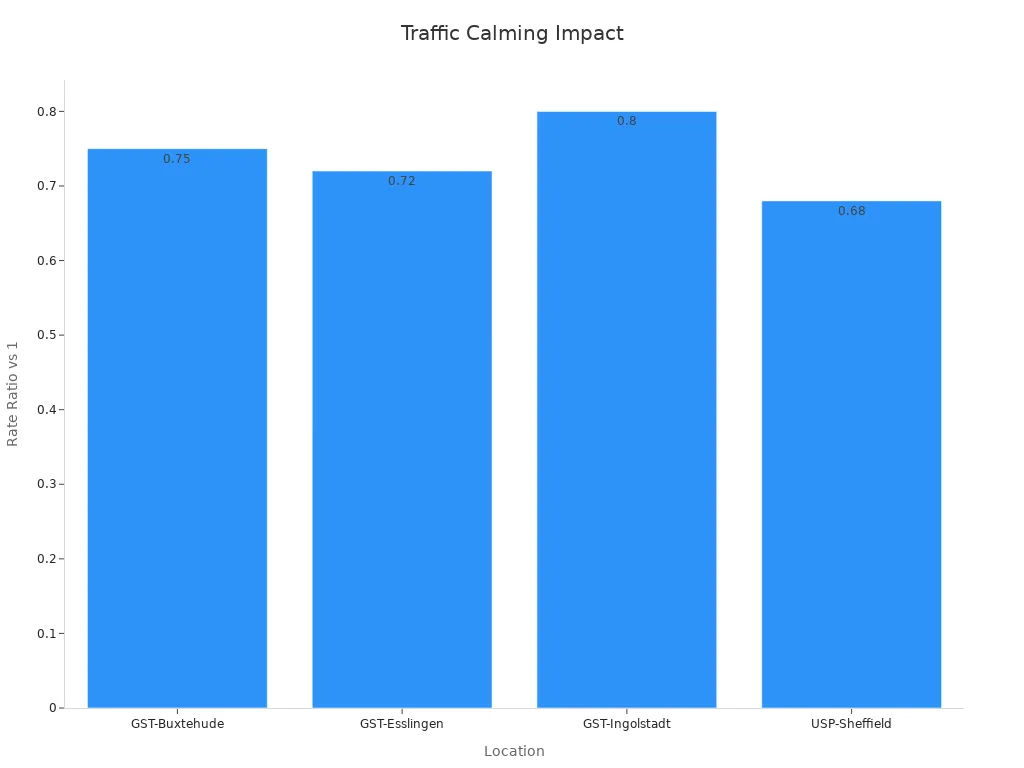
يعتمد اختيار أفضل أداة على الطريق والقواعد المحلية. يجب على المجالس والأشخاص الذين يعيشون بالقرب منها النظر في القواعد وتجربة الأدوات المؤقتة قبل إجراء تغييرات كبيرة. للحصول على فهم أعمق لكيفية اختلاف علامات STOP بين البلدان وكيفية مساهمتها في السلامة على الطرق, استكشف مدونتنا: استكشاف أنواع مختلفة من علامات التوقف: فهم الاختلافات العالمية ودورها في السلامة المرورية.
التعليمات
ما هو الفرق الرئيسي بين إشارة التوقف ومطب السرعة؟?
تخبر علامة التوقف السائقين بالتوقف بشكل كامل عند نقطة معينة. حدبة السرعة تجعل السائقين يبطئون السرعة عن طريق تغيير سطح الطريق. كلاهما يساعد على تهدئة حركة المرور, لكنهم يعملون بطرق مختلفة.
هل يمكن استخدام مطبات السرعة على جميع أنواع الطرق؟?
تعمل المطبات السريعة بشكل أفضل في الشوارع السكنية, المناطق المدرسية, ومواقف السيارات. أنها لا تناسب الطرق الرئيسية أو الأماكن التي بها العديد من المركبات الثقيلة. يتحقق المخططون من نوع الطريق قبل تركيبه.
هل علامات التوقف تعمل دائمًا على تحسين السلامة?
تعمل علامات التوقف على تحسين السلامة عند مفترق الطرق المزدحم أو الخطير. إنهم لا يساعدون دائمًا لفترة طويلة, طرق مستقيمة. الإفراط في استخدام إشارات التوقف يمكن أن يؤدي إلى تجاهل السائقين لها, مما يقلل من تأثيرها.
هل حدبات السرعة صاخبة؟?
يمكن أن تسبب مطبات السرعة ضوضاء عند مرور المركبات فوقها, خاصة إذا لم يبطئ السائقون. يمكن أن يساعد استخدام الحدبات المطاطية أو المعيارية في تقليل الضوضاء. التصميم الجيد والتنسيب يحدثان فرقًا أيضًا.
هل يمكن للمجالس استخدام علامات التوقف ومطبات السرعة معًا?
غالبًا ما تستخدم المجالس كلاهما لمزيد من الأمان. علامة التوقف تتحكم في مفترق الطرق, في حين أن السرعة تحد من السيارات البطيئة على طول الطريق. يعمل هذا النهج متعدد الطبقات بشكل جيد بالقرب من المدارس, الحدائق, والمعابر المزدحمة.

